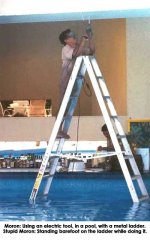Not sure if this is a legal topic for this forum but wasn't sure where else to post. I'm sure there are a few opinions out there.
The situation is a directive from our new safety manager that NFPA70e shall strictly be adhered to and no one is to be exposure to any live circuits greater than 50 V at our US plant. Period, no exceptions, even if appropriate PPE gloves are worn. Any probing required to troubleshoot circuits must be done by attaching probe point while the circuit is deenergized and the energize. The main panel I'm currently working on is completely IP20 rated, mainly 24VDC, and some 120VAC (fused at 10A)mainly for some NEMA 4 and 5 contactors that are being reused from an older facility that was recently decommissioned.
As can be expected, this takes a lot of time as you set up for five minutes for making a measurement that takes only 10 seconds. I have not read NFPA70e but I have heard that probing may be allowed in limited cases. What have your experiences been/ what guidelines do you follow? I hope to get a copy of standard next week.
The situation is a directive from our new safety manager that NFPA70e shall strictly be adhered to and no one is to be exposure to any live circuits greater than 50 V at our US plant. Period, no exceptions, even if appropriate PPE gloves are worn. Any probing required to troubleshoot circuits must be done by attaching probe point while the circuit is deenergized and the energize. The main panel I'm currently working on is completely IP20 rated, mainly 24VDC, and some 120VAC (fused at 10A)mainly for some NEMA 4 and 5 contactors that are being reused from an older facility that was recently decommissioned.
As can be expected, this takes a lot of time as you set up for five minutes for making a measurement that takes only 10 seconds. I have not read NFPA70e but I have heard that probing may be allowed in limited cases. What have your experiences been/ what guidelines do you follow? I hope to get a copy of standard next week.
Last edited:



